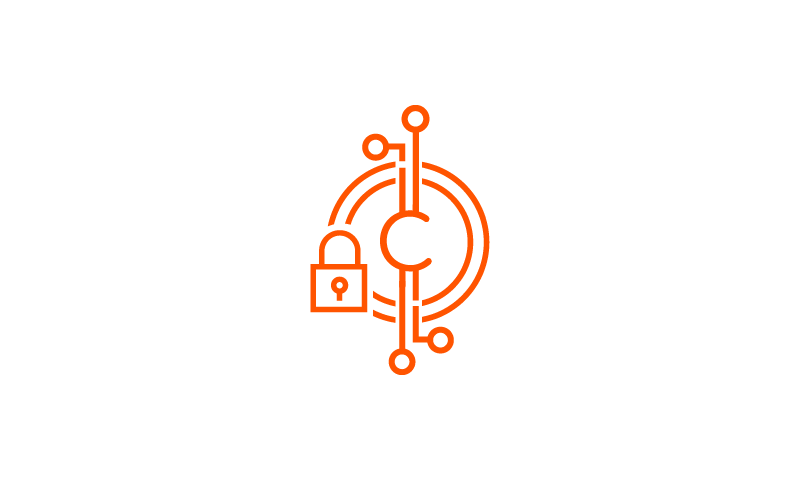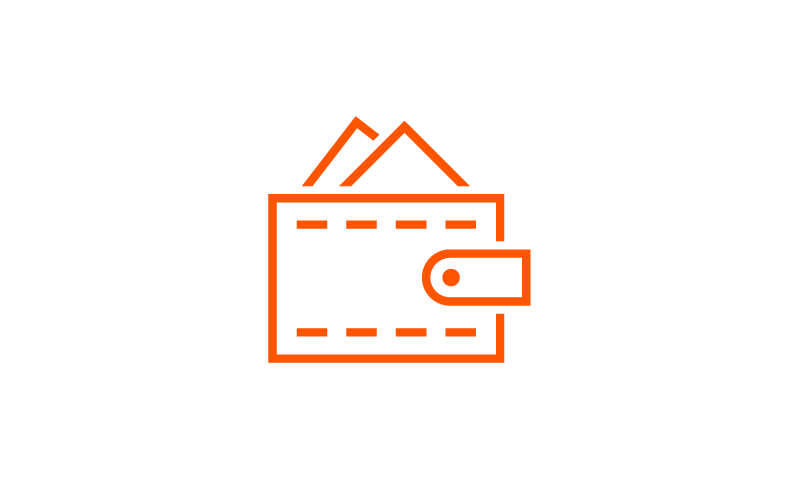Consensus 2023: The Key Takeaways
CoinDesk’s Consensus 2023 conference brought together thought leaders and innovators from across the digital assets industry. Among the greatest strengths of the conference was the diversity of attendees and speakers, ranging from software developers to regulators, and venture capitalists to human rights activists.
This meeting of the minds produced rich, thought-provoking dialogue onstage, and demonstrated that the digital asset community’s commitment to delivering revolutionary products remains unwavering. After three full days of discussion about how blockchain technology and digital assets can protect property rights in an increasingly digital world, drive exponential efficiencies in enterprise operations, and inspire a new generation of consumer applications, Consensus 2023 made clear that optimism across the digital assets industry is at an all-time high.
Key Takeaways
- Advancements in artificial intelligence (AI) have brought a new sense of urgency to concerns surrounding data integrity and protection. Blockchains have emerged as critical tools that can be used to validate information, authenticate provenance, and protect creator rights.
- Artificial intelligence (AI) tools can significantly reduce the complexity associated with smart contract development. As these tools become more widely used, the possible use cases of blockchain technology will become limited only by the imagination of developers rather than their technical ability to write code.
- Developers emphasized the need to improve the user experience (UX) of blockchain networks with solutions such as account abstraction and Layer 2 (L2) scaling solutions. These innovations were frequently cited as being critical to the onboarding of the next wave of users into Web3.
Blockchains Provide a Solution to Protecting Data Provenance in an Increasingly Digital World
Since the advent of the consumer internet, the digitization of society has been relentless. Today, most information originates in a digital rather than an analog format. With exponential advances in consumer hardware and software, this endless trove of information can be accessed anywhere. Individuals also have access to tools that allow them to repurpose and remix this data, whether for altruistic or malicious purposes. This trend has long raised concerns surrounding data integrity and protection, but several speakers at Consensus 2023 discussed how advancements in artificial intelligence have brought a new sense of urgency to these issues.
In this vein, a throughline of Consensus 2023 was the fundamental role that blockchains can play in validating information, authenticating provenance, and protecting creator rights. Speakers largely focused on two characteristics of blockchains that predispose them to these use cases: the use of asymmetric cryptography, and decentralization. Asymmetric, or public-key cryptography, relies on key pairs—a public key and a correspondent private key—to both encrypt and decrypt data. This key pair is tied to an entity, an address, or some other identifier and allows for secure digital signatures to be applied to a message or data file. When run on blockchain infrastructure that is highly decentralized, transparent, globally accessible, and tamper-resistant, public blockchains can become credibly neutral applications used to authenticate the provenance of data and serve as a trustless source of truth.
AI’s emergence into the world of art and music was a fascinating case study used to highlight how blockchain infrastructure could provide this critical service. As evidence of impressive and concerning advancements in AI, several speakers pointed to detailed art created by Dall-E2 as well as an AI-generated song with vocals mimicking Drake and The Weeknd on a song called “Heart on My Sleeve.” While these case studies illustrate the immense creative potential of AI, they also challenge concepts of originality and authenticity. Moreover, they raise countless technical, ethical, and legal questions regarding the attribution of credit for these works.
Speakers discussed the powerful solution that blockchain technology could provide in addressing these issues. By cryptographically tagging data files to an identity, whether that data is in the form of a drumbeat, a brush stroke, or a piece of text, blockchains allow for the efficient and secure tracking of data provenance. The transparency of blockchains also allows anyone to easily access and independently verify the authenticity of these tags. The result is the ability to track the original source of data used in the creative process by humans and AI bots alike and ultimately allow for the attribution of credit to the true originators of those inputs.
This application of blockchain technology was also proposed as an effective tool for combatting misinformation. Speakers focused on the growing threat to society of deep fakes—synthetic representations of an individual’s likeness, speech, or actions often achieved by using generative AI. As AI advancements continue to accelerate, the quality of these fakes has become increasingly difficult to discern from reality. However, through the use of cryptographic hash functions, among other mechanisms, blockchains provide an efficient method to verifiably prove whether data has been manipulated from its original format. Ultimately, these attributes may position blockchain infrastructure as a critical component in the protection of data integrity and property rights.
Introducing AI to Blockchain Networks
AI continued to emerge as a recurring discussion throughout Consensus 2023, with experts exploring the synergies between AI and blockchains. Industry leaders are optimistic about the introduction of AI in the blockchain sphere, and how it is likely to help address some of the challenges that have hindered the development of the space, including technical competence when deploying applications and the security of its code.
Coding a smart contract in a blockchain requires a high level of technical competence including software know-how, familiarity with languages such as Solidity and Rust, and an understanding of blockchain network infrastructure. These technical barriers can pose challenges due to the complexity of the code required and the need for precision in its execution. Through AI tools, developers can automate parts of the smart contract writing process, reducing the amount of time, resources, and personnel costs associated with creating complex contracts. Smart contract deployment is expected to be limited by developer creativity rather than technical ability or heavy investment in resources and unlock a new wave of creativity and innovation by making it easier than ever to deploy new ideas on blockchains.
Moreover, AI can support code auditing in order to identify and fix errors in smart contracts before they are deployed, reducing the risk of costly bugs or security flaws. Today, the process of deploying blockchain applications relies on a long series of manual and specialized audits, bug bounties, and hackathons to discover potentially compromising vulnerabilities within the smart contract code. This process is not only costly but may lack security guarantees due to unforeseen weaknesses that may be missed through human review. AI can offer improved solutions to the auditing process by efficiently modeling synthetic malicious scenarios, detecting bugs that may be missed by the human eye, analyzing vast amounts of data, and even identifying potential scams in external smart contracts. These capabilities represent a significant step forward in the ongoing effort to improve smart contract security and make blockchain applications more reliable and secure for users.
Onboarding the Next Wave of Users Through Improvements in Blockchain User Experience (UX)
Another prevalent topic throughout the conference centered around the importance of improving the blockchain user experience (UX). Speakers from across the industry cited the technical knowledge required to interact with blockchain networks as a significant barrier to driving organic user growth. As internet users have become accustomed to seamless web interfaces and intuitive gesturing on mobile devices, interacting with public blockchains in their current state is a foreign experience. For the next wave of users to be onboarded, speakers emphasized the need to make blockchain interactions as easy as our Web2 experiences, removing any need to understand underlying blockchain processes.
Smart contract accounts used to facilitate account abstraction were among the most interesting solutions explored. Through account abstraction, developers can reduce the complexity of blockchain networks, allowing users to interact with Web3 in a way that is similar to their Web2 experience. These solutions can improve blockchain-native interfaces by providing alternatives to private key management through social recovery mechanisms, simplifying the process of paying for transaction fees, providing a more intuitive login experience, and managing user data through friendlier mechanisms.
Layer 2 (L2) solutions are another avenue through which improvements to UX are being implemented. These complementary blockchain networks provide advantages such as reduced transaction fees, increased transactional throughput, and privacy-preserving features. Additionally, L2 networks inherit the security and network effects of underlying layer 1 (L1) networks such as Ethereum. The result of innovations in L2 scaling opens the door for a Cambrian explosion in the possible implementations of blockchain technology.
Improvements in UX & Scalability Allow for Greater Institutional Adoption
As the pursuit of onboarding the next wave of users to blockchain networks intensifies, notable Web2 entities used the stage at Consensus 2023 to highlight their contributions. PayPal introduced a new feature that will allow its customers to transfer digital assets across the Web3 ecosystem from the Venmo app. Robinhood introduced “Robinhood Connect,” a new feature allowing users to tap into their existing Robinhood account to fund supported Web3 wallets and/or decentralized applications (dapps). This feature may simplify a user’s access to fiat currencies and eliminate complex on-ramping processes. Google Cloud continued to cement its presence in the Web3 community by partnering with Polygon, an L2 solution designed to enhance Ethereum’s scalability. The collaboration is anticipated to empower developers to tap into Polygon nodes in order to create and deploy dapps. Google Cloud also plans to dedicate technical resources to developing tools such as zero-knowledge (ZK) technology. The collaboration adds to Google’s Web3 startup program, which includes prominent names such as Alchemy, Aptos, Base, Celo, Flow, Hedera, Nansen, Near, and Solana.
Many speakers were also interested in highlighting real-world applications of blockchain technology. Among those discussed were the efficiencies associated with tokenizing real-world assets (RWA). Specifically, Securitize CEO Carlos Domingo shared that institutions are exploring tokenization solutions through permissioned L2s. Domingo discussed the potential advantages of taking such an approach to tokenizing private equity funds. This can enable a significant reduction in investment minimums, improve asset transparency and liquidity, preserve the ability to interact with the permissioned versions of today’s most popular DeFi dapps, and leverage the strong data settlement assurance of L1 blockchains.
Franklin Templeton’s adoption of asset tokenization provided a tangible example of this vision at work. At Consensus 2023, Franklin Templeton announced that its US-registered mutual fund, the Franklin OnChain US Government Money Fund (FOBXX), will expand to the Polygon blockchain, tapping into the Ethereum network. FOBXX is the first US-registered mutual fund to use a public blockchain for transactions and share ownership recording. The fund is currently active on the Stellar blockchain with over $270 million in assets under management.1
From a business-to-business (B2B) perspective, Ernst & Young’s Global Blockchain Leader, Paul B. Brody, acknowledged that the continual improvements to blockchain scalability and privacy are allowing enterprises to explore system management solutions, implement smart contract processes for shared business logic, and even provide a more effective timestamp process for supply chain management.
That’s a Wrap, Back to Building
Overall, we left Consensus 2023 with renewed conviction in the digital assets theme. The innovations discussed reinforced our view that blockchain technology is on a path toward becoming an increasingly important part of the lives of people around the world. While it is clear there is much that needs to be built for this industry to become mainstream, we see a long runway of growth and utility ahead.



